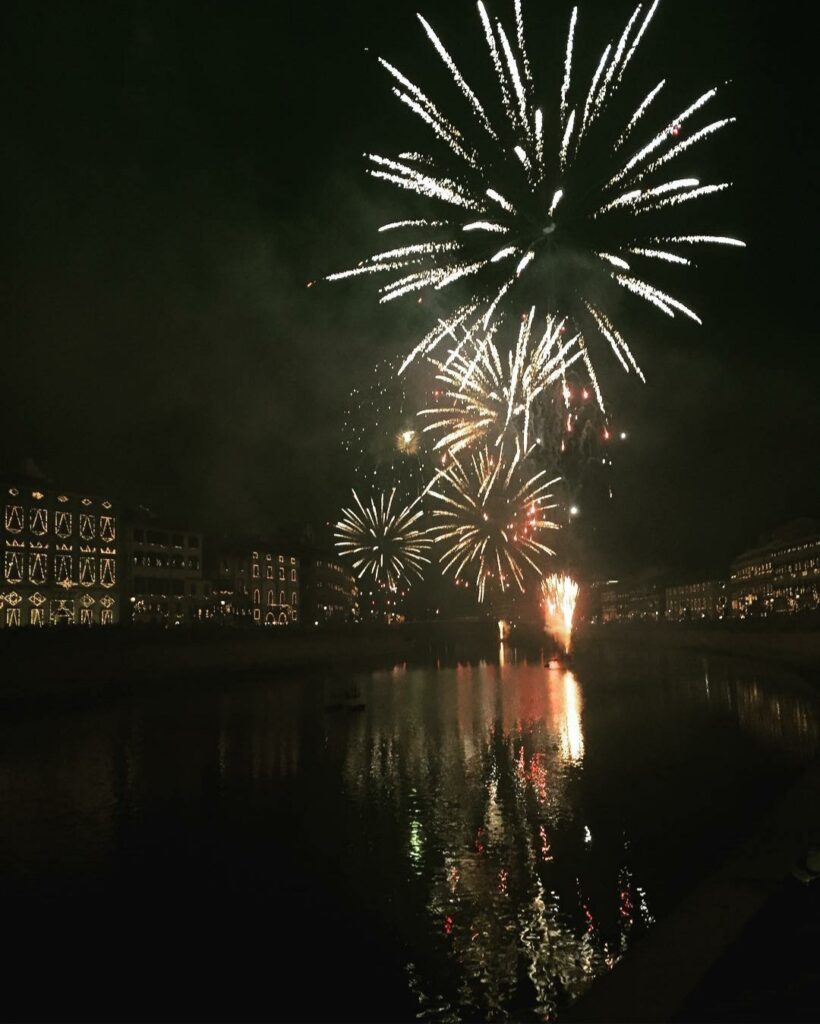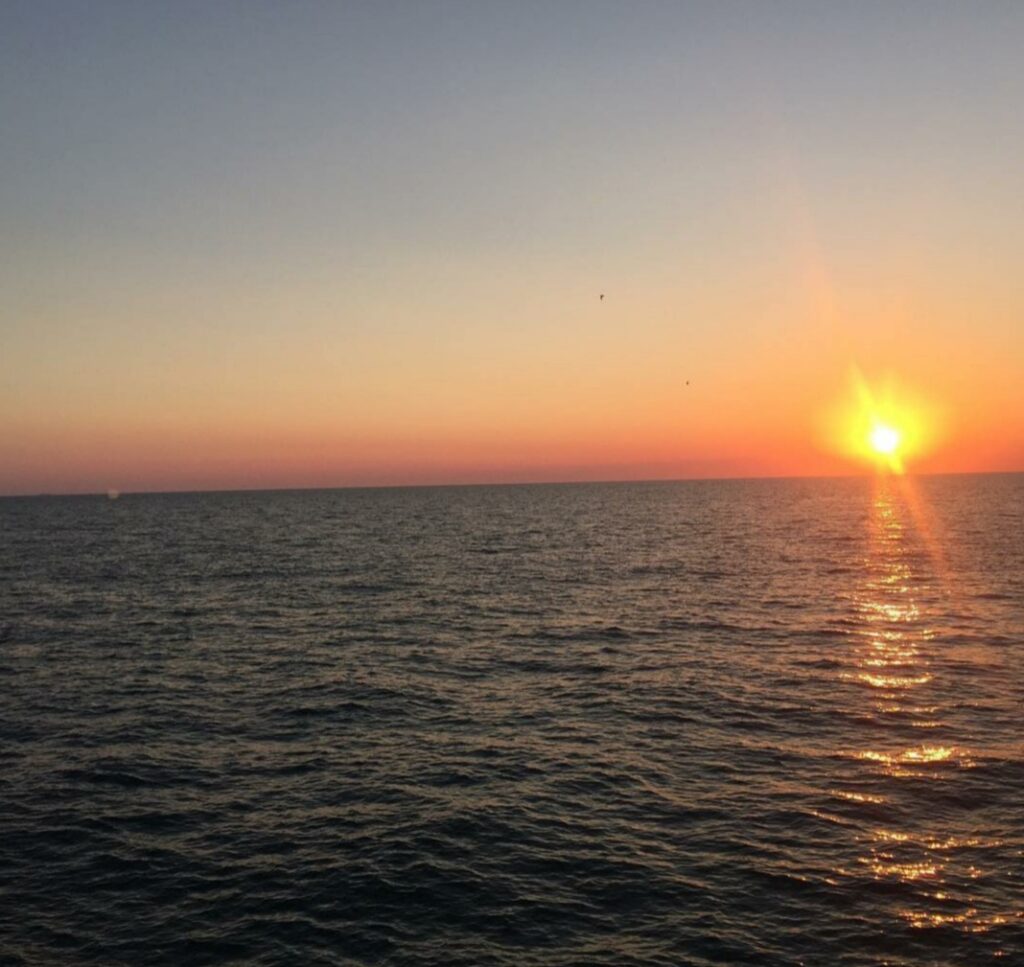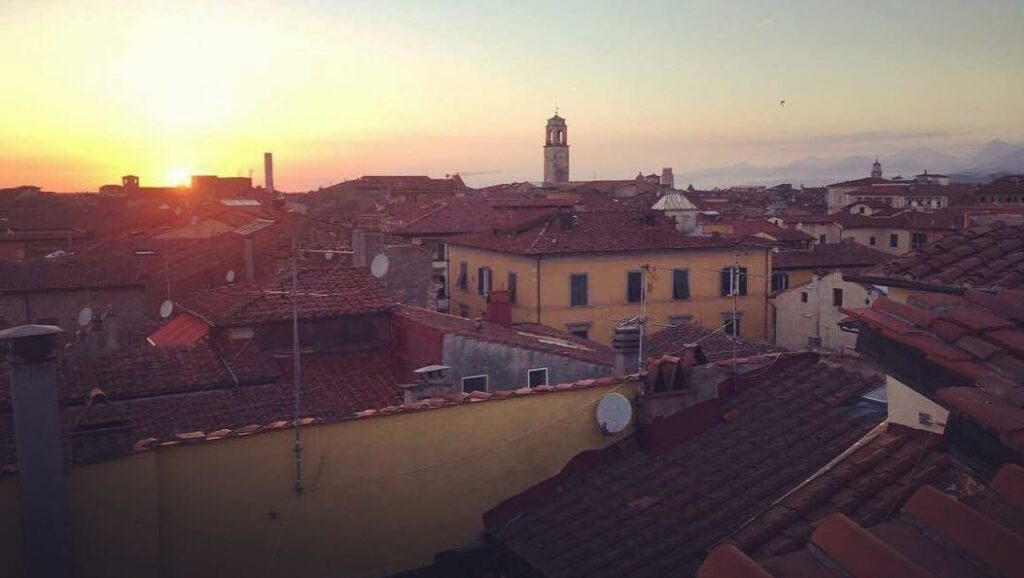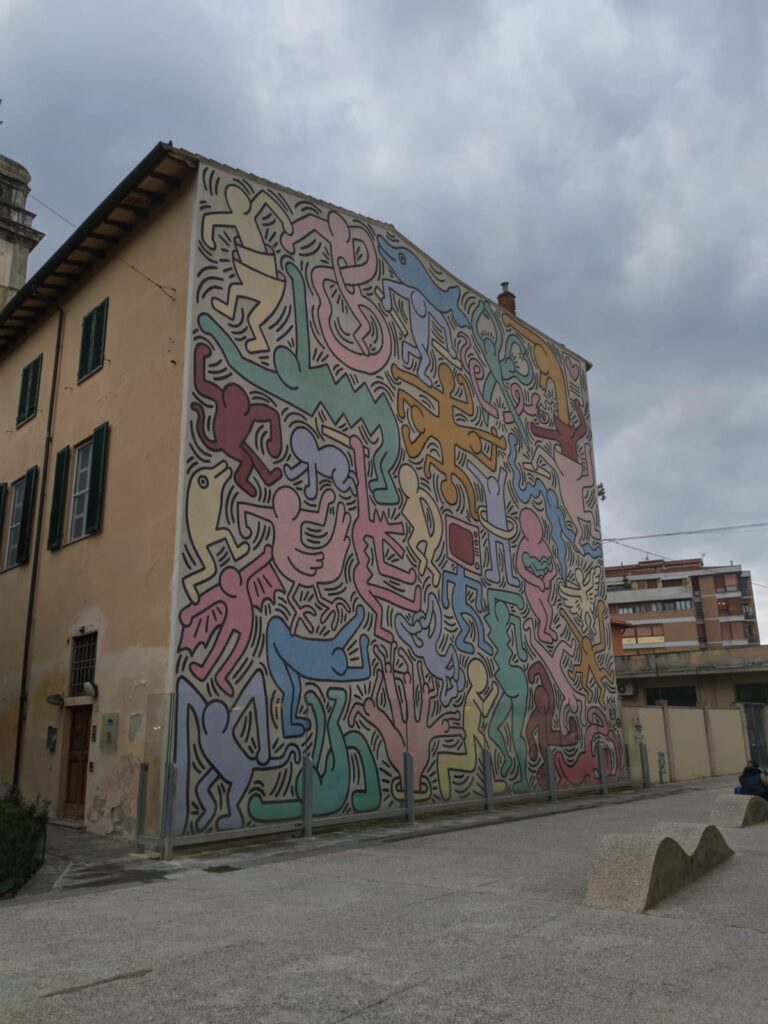If you are interested in visiting Pisa, you will have definitely heard of the Leaning Tower of Pisa. Since every tourist guide ever has exhausted the topic, during the time spent reading this blog the tower will not exist. Instead, we will talk about the quirks and kinks of Pisa that made me fall in love with the city.
Here are 5 things you may not have known about Pisa:
1. Once a year, Pisa shines
La Luminara di Pisa
Every year on the evening of the 16th June the city is illuminated with oil candles placed on wooden frames known by the locals as biancheria meaning linen. Over 7,000 candles light up the architecture along the river Arno and on floating platforms on the river itself. Around 11pm, crowds tend to gather to watch a huge firework display from the Cittadella Vecchia which is best seen from the riverside. The tradition of the Luminara dates way back to the 25th of March 1688 when the body of Ranieri degli Scacceri, patron saint of the city, was placed in the chapel of the Cathedral of Pisa. Just a heads up: Pisa is renowned for its student life and these guys love nothing more than to make some noise on the streets.

2. Pisa has its own calendar
Il Capodanno Pisano
Not many people actually know that Pisa has its own calendar. Don’t feel bad, I didn’t until everyone started asking how I was celebrating the New Year in March?? The Pisan New Year (Capodanno Pisano in Italian) is celebrated on the 25th of March making it the first city worldwide to celebrate the New Year 9 months ahead of the official calendar. The tradition can be traced back to the age of the Roman empire whose calendars marked the first days of March as the New Year. The 25th of March specifically is the beginning of the Solar Year.
The celebrations kick off on the 24th with the traditional San Romolo dinners in Pisa’s historic centre. Many people enjoy cecina – a traditional bread made with chickpea flour, arselle – Pisan dried cod and many other typical dishes. At 11pm, there is usually a firework display and, may I just say, that Pisa knows how to put on a firework display. On the 25th of March, there is a procession at 10am which begins at the main squares between Borgo Stretto and Corso Italia and ends at Piazza Cavalieri where, at exactly noon, a beam of sunlight, filtered through the Duomo’s round window, strikes a marble egg positioned on Giovanni Pisano’s pulpit. Various celebrations continue throughout the day and end with the final concert in Piazza Cavalieri.
3. Pisa is for beach lovers
Marina di Pisa
Marina di Pisa seaside town built during the economic boom of the late 1800s. To encourage tourism, a steam railway was built between Pisa and the Marina. Stunning Art Nouveau and neo-medieval villas were also built there which were a source of inspiration for the poetry of Gabriele D’Annunzio.
The town is no longer the vibrant spot it once was; its railway station has been converted into a private house and there are only a few restaurants sprinkled around the town. However, Marina di Pisa remains a popular tourist destination during the summer. On public holidays and high season evenings, its seafront, Via Repubblica Pisana, is closed to vehicles and used as a promenade for visitors.

4. Pisa is home to world-famous street art
Tuttomondo
Art lover? Did you know Pisa is home to a Keith Haring mural?! The idea of bringing to life the south wall of the church of San Antonio came about when a local student bumped into Haring on the streets of New York. The piece, titled Tuttomondo (the whole world), is one of the few public works Haring produced other than his “subway drawings” when he was starting out.
The piece depicts 30 figures each symbolising a different kind of peace and each connected to and separated from one another in different ways. The colours are somewhat more neutral than other Haring pieces and are said to mimic and harmonise with the pastel, almost autumnal colours of the town itself.
5. Pisa holds one of the most important religious relics in the world
Santa Maria della Spina
The church of Santa Maria della Spina, one of Italy’s most beautiful Gothic churches, was renamed in 1333 when it received a reliquary none other than a thorn reputed to have been taken from the crown of Jesus worn at the time of his crucifixion. The thorn was bought to Pisa from the Holy Land by a local merchant. The most highly commended artists of the time were invited to produce works of art for the church following its elevation in status. Among the works produced were the sculpture of Madonna of the Child with Two Angels (Madonna col Bambino) and Andrea Pisano’s Madonna of the Rose (Madonna della Rosa).
Due to its position on the Arno river which threatens its stability, the church has undergone various renovations. The biggest and renovation occurred in 1871 when the church was transferred, stone by stone, to the higher ground on Lungarno Gambacorti. Needless to say, the thorn of Christ’s crown was moved in the process and now resides in the church of Santa Chiara.
(It’s Francesca here, it was very exciting to be featuring a post! I hope you enjoyed it. See you next time. I’ll leave you with a beautiful view of Pisa below, ciao!)



Excellent, well composed and informative
That’s what I thought too, courtesy of Tamsin! 🙂
Thank you!!1